#flatford mill
Text

Flatford Mill from a Lock on the Stour painted by John Constable (1776 - 1837)
#art#art history#artwork#culture#curators#history#museums#painting#romanticism#vintage#john constable
89 notes
·
View notes
Text

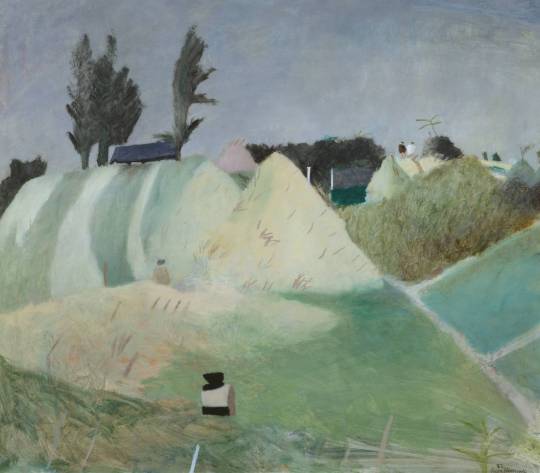
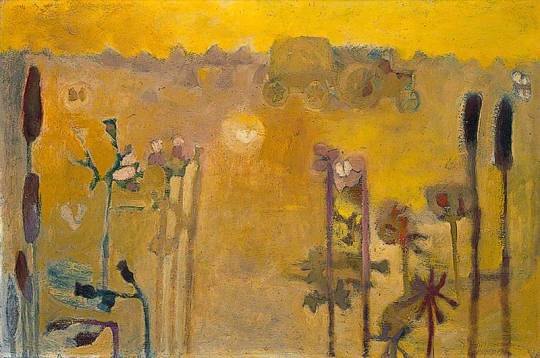
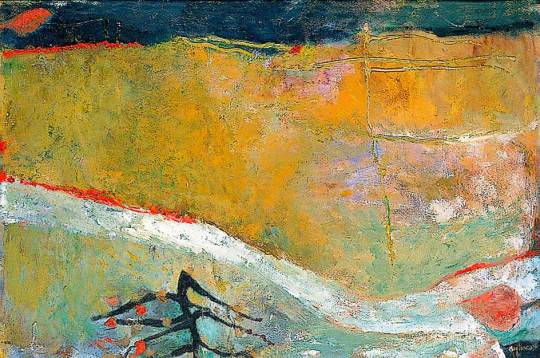

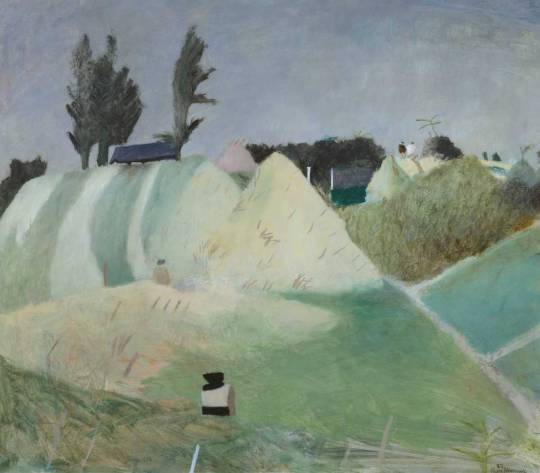
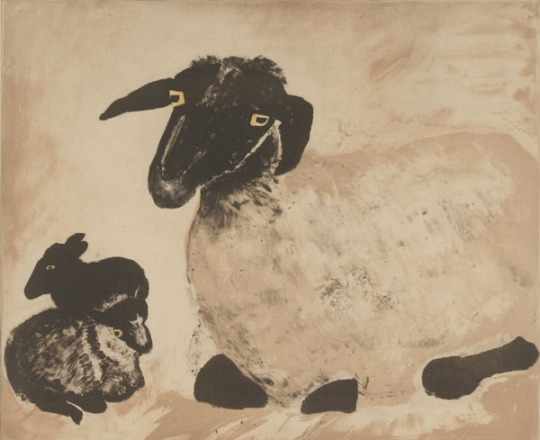
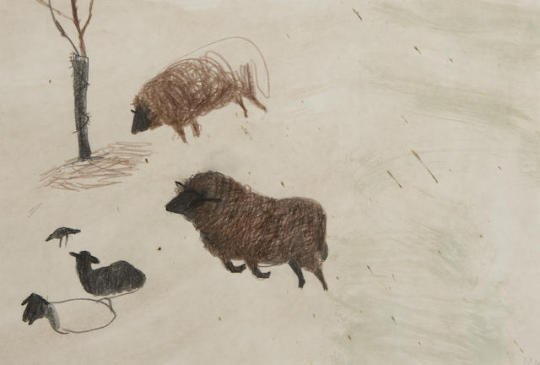
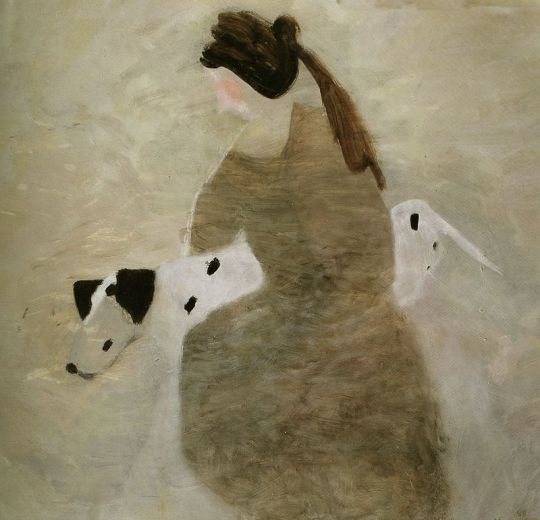
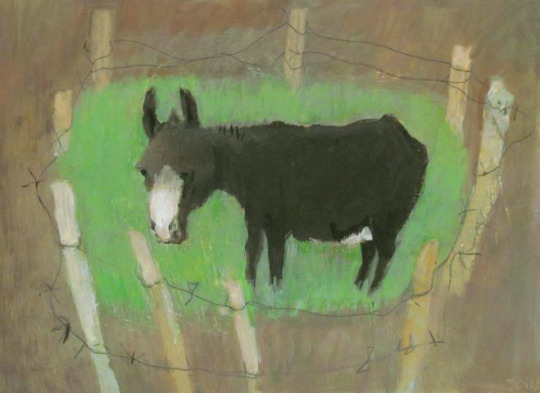

Rural visionary Mary Newcomb (1922-2008, British) was a self-taught painter whose work is both unique and universal – growing from the soil of Waveney Valley farms in the 1950s to a late blooming in airy poetry.
Trained in science and first drawing birds at Flatford Mill Field Studies Centre in 1945, she met husband Godfrey Newcomb on a bittern-boosting trip to Walberswick. They farmed, potted and restored gypsy caravans as Mary found her vocation as a lyrical painter which she pursued in a series of ancient houses – and on foot, bicycle, bus and train – across Norfolk and Suffolk.
Praised by Ben Nicholson and collected by film stars, Mary Newcomb remained the unaffected poet of the rural scene, communicating the joy of existence in the world of country rites and rituals and the wonders of nature.
Ian Collins, curator of the exhibition, met Mary during one of his first interviews as a journalist back in 1978:
“When I first met Mary at her farm, I left after the interview and looked at the landscape as though it was a Mary Newcomb painting. She has that really powerful impact and yet she paints very gentle pictures too. Some make you feel like you can fly – utterly uplifting. She paints a very accurate picture of the Waveney Valley and its rural history, but she likes to play around with perspective and proportion. She stands out because her paintings are like nobody else’s. She didn’t know where they came from – she didn’t know how she did them. They almost emerged as if by magic. To focus her mind before painting, Mary used to write maxims. One that best explains her inspiration is, “Press close to farms, for all your life comes from them”, which is something many people in Norfolk can relate to. Mary wrote these words in large print on the walls of her cottage and studio to give her guidance. She’s a poet in paint and that comes across in the words and pictures of a very beautiful, but utterly East Anglian landscape”.
https://gerryco23.wordpress.com/.../mary-newcomb-the.../
17 notes
·
View notes
Photo
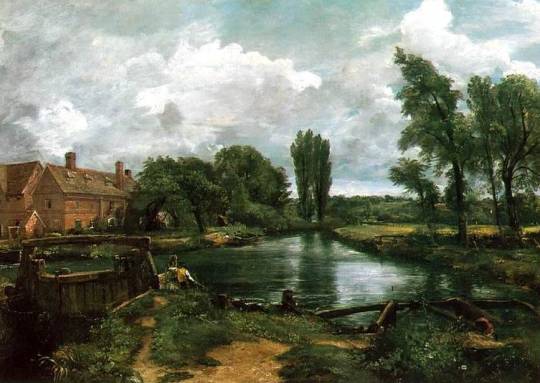
John Constable - Flatford Mill, Scene on a Navigable River, 1811
1 note
·
View note
Text

"willy lott's cottage flatford mill east bergholt dedham spring; essex; england; uk..." :)
1 note
·
View note
Text
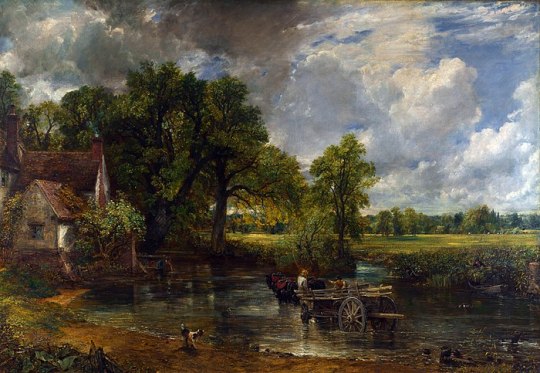
006. "The Hay Wain" by John Constable (1821)
The Hay Wain by John Constable was originally named Landscape: Noon. It shows a rural scene on the River Stour between the English counties of Suffolk and Essex. It currently lives at the eNation Gallery in London. This oil on canvas painting shows three horses pulling wood (better known as a wain) across the river. On the far left is Willy Lott's Cottage, which you can visit and stay the night in.
The Hay Wain is a series of paintings by Constable called the "six-footers," which he painted for the annual summer exhibitions at the Royal Acadamy. Flatford mill was owned by constables father and the house on the left belonged to a neighbor, Willy Lott who was said to have been born in the house and never left it for more than four days in his entire life. Though none of the originally trees in the painting still stand the Lott’s cottage survives practically unharmed.
What I really enjoy about this painting is the way the background, specifically the sky, is curated. I love how Constable paints the clouds in particular and how you can see a storm approaching with the darker clouds circulating to the foreground. I also really love how the water is painted and how it reflects the surrounding ambiance. In my own work I want to use more color and I really appreciate the blues and the different shades of green used so effortlessly. Overall I hope to explore more color palettes in my own work.
0 notes
Text
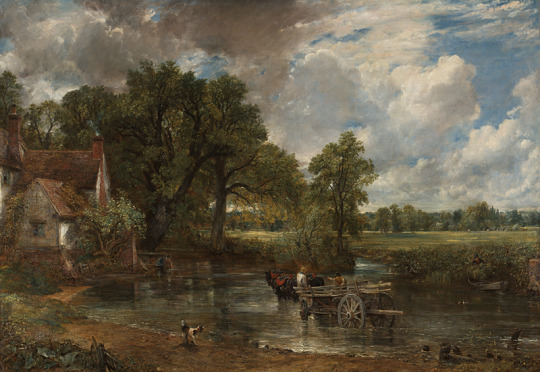
Título completo: El carro de heno
Artista: John Constable
Fechas de artistas: 1776 - 1837
fecha realización: 1821
Medio y soporte: Óleo sobre lienzo
Dimensiones: 130,2 × 185,4 cm
Resumen de inscripción: Firmado; Con fecha de
Crédito de adquisición: Presentado por Henry Vaughan, 1886
La vista es del estanque del molino en Flatford en el río Stour, Flatford Mill era un molino de agua para moler maíz, operado por la familia Constable durante casi cien años. Todavía sobrevive y está aproximadamente a una milla del lugar de nacimiento de Constable en East Bergholt, Suffolk. También se conserva la casa de la izquierda; en la época de Constable estaba ocupado por el arrendatario Willy Lott.
El título, The Hay Wain , se refiere al carro de madera (carro) utilizado para transportar hierba cortada y seca (heno). El carro vacío avanza por las aguas poco profundas para llegar al prado del otro lado, donde trabajan los segadores.
Aunque la pintura evoca una escena de Suffolk, fue creada en el estudio del artista en Londres. A partir de una serie de bocetos al aire libre realizados durante varios años, Constable luego hizo un boceto preparatorio al óleo de tamaño real para establecer la composición antes de pintar el cuadro final.
Información e imagen de la web de la National Gallery de Londres.
0 notes
Text

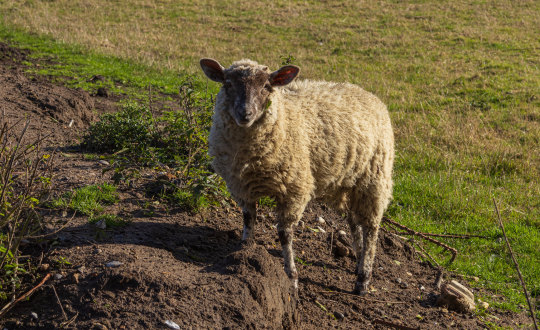
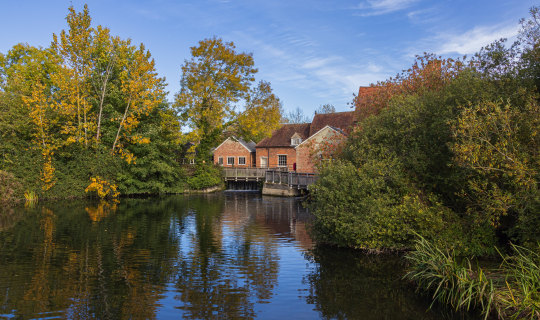

British countryside (2) (3) (4) by Mark
Via Flickr:
(3) Flatford Mill
1 note
·
View note
Photo
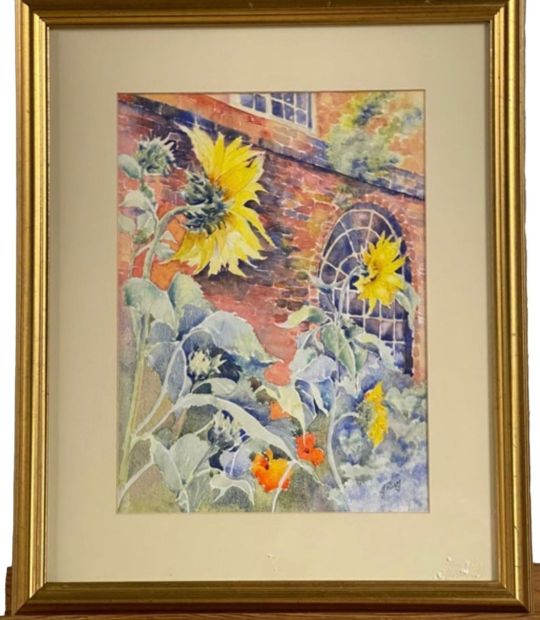
Beautiful Original Watercolour Titled Sunflowers At Flatford Mill By Jan Pursey £95 eBay item number 234060031417 #janpursey #flatford #flatfordmill #flatfordmillnationaltrust #sunflowers #sunflowers🌻 #sunflowersofinstagram #flowers #stilllife #stilllifeart #stilllifeartist #stilllifegallery #art #artforsale #artgallery #homedecor #artforsale #artforsaleoninstagram https://www.instagram.com/p/ClQgtuJo0Ao/?igshid=NGJjMDIxMWI=
#janpursey#flatford#flatfordmill#flatfordmillnationaltrust#sunflowers#sunflowers🌻#sunflowersofinstagram#flowers#stilllife#stilllifeart#stilllifeartist#stilllifegallery#art#artforsale#artgallery#homedecor#artforsaleoninstagram
0 notes
Photo

John Constable | Flatford Mill (‘Scene on a Navigable River’), 1816-7 (at Royal Oak, Michigan) https://www.instagram.com/p/Cg9MuxCOh1E/?igshid=NGJjMDIxMWI=
0 notes
Video
Willy Lott's Cottage Suffolk NT by Adam Swaine
Via Flickr:
Flatford is a small hamlet close to East Bergholt in Suffolk. It is most famous for Flatford Mill, Willy Lott's Cottage and Bridge Cottage, immortalised in the paintings of John Constable
#suffolk#rivers#river stour#english rivers#plants#nature lovers#nature#National Trust#river#river bank#england#english#cottage#english cottage#constable#flatford Mill#britain#british#uk#uk counties#Adam Swaine#2021#walks#Trees#waterside#waterways#EAST ANGLIA#green#flora
3 notes
·
View notes
Video
The Haywain by Tony
Via Flickr:
The Haywain is a famous painting by landsacpre painter John Constable painted in 1821. set on the River Stour. 2014 04 1062 East Anglia Holiday Suffolk Flatford Mill 3HDR
#HDR#europe#briatin#england#suffolk#East Bergholt#Flatford Mill#John Constable#The Hay Wain#Willy Lott's Cottage#reflection#weather#day#clear#sunny#blue#mill#cottage#historic#art#artistic#classic#scenic#scenery
9 notes
·
View notes
Photo

Probably the most famous cottage in the world, 1890
Willy Lott's Cottage was immortalised by John Constable in several paintings , notably 'The Hay Wain'. The painting was originally titled Landscape: Noon, and was completed in 1821. It depicts a rural scene on the River Stour between the English counties of Suffolk and Essex, and hangs in the National Gallery in London. The work is regarded as "Constable's most famous image" and one of the greatest and most popular English paintings.
The cottage takes its name from its resident at the time John Constable did his paintings; at that time, the house was known as Gibeons Farm. William Lott (1761 - 1849), a tenant farmer, resided at Gibeons Farm and spent only four nights away from this house in the whole of his life. The earliest part of the building is sixteenth century. It was restored in the 1920s after a revival of interest in Constable's paintings. The cottage is located on the bank of the River Stour, just downstream from Flatford Mill in the heart of Dedham Vale, a typically English rural landscape.
In this photograph it's place is further cemented into hstory by the The Ipswich and District Photographic Society, who set-up this group picture in 1890, just 53 years after the death of John Constable, who died on the night of 31st March 1837, and was buried in the graveyard of St John-at-Hampstead Church in Hampstead in London.
In a couple of years time John Constable's idyllic view of the English countryside will have it's bicentennial celebration, and tourists will gather at this iconic building in Suffolk, lovingly restored, and looked after by the National Trust.
This is my colourised version of the sepia toned picture taken in 1890
Restoring Your Past … Website
Restoring Your Past … on Facebook
#photographic society#willy lott's cottage#john constable#the hay wain#flatford mill#east bergholt#dedham vale#suffolk#history#colourised#colorized#photo colourisation#photo colorization
0 notes
Photo

In Constable Country, Essex and Suffolk, England
The name Suffolk Pink is a term given to many cottages & farmhouses throughout the rural areas of Suffolk and Essex, England.
Dedham Vale has barely changed since John Constable captured the pastoral landscape with scudding clouds in his romantic 19th-century paintings. The area straddles the Essex and Suffolk borders where you can visit Flatford Mill with Willy Lott’s House, famously featured in ‘The Hay Wain’.
#traditionalist architecture#constable country#england#essex#suffolk#cottage#suffolk pink#john constable#dedham vale#flatford mill#the hay wain#willy lott's house
0 notes
Photo

CONSTABLE, John
Flatford Mill from a Lock on the Stour
c. 1811
Oil on canvas, 25 x 30 cm
Victoria and Albert Museum, London
60 notes
·
View notes
Photo
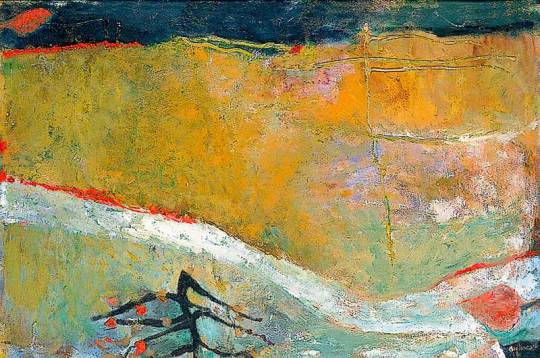
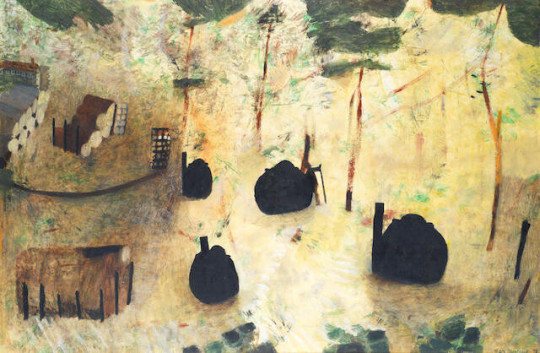
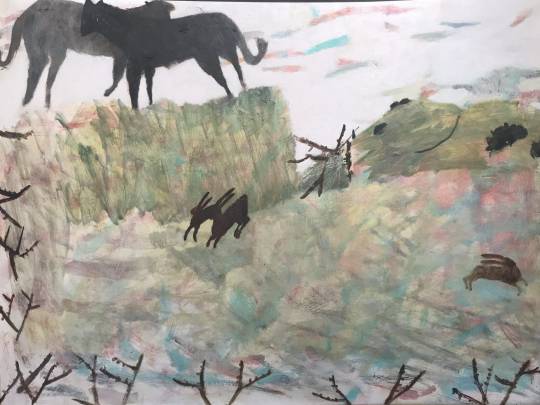
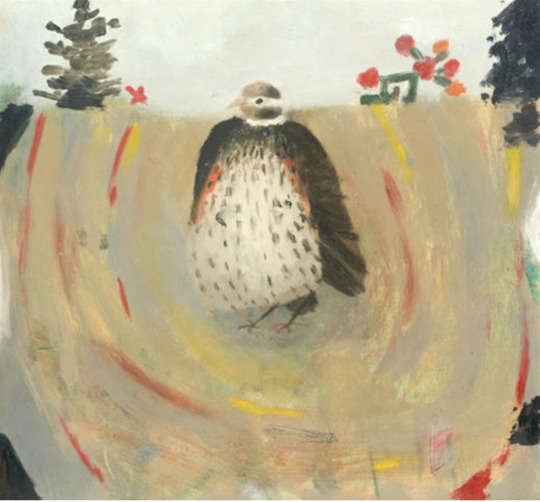
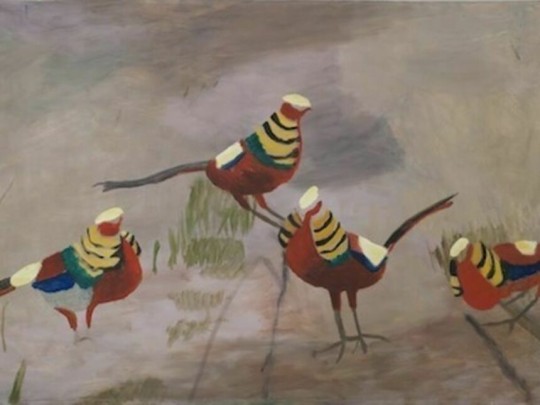



Mary Newcomb (1922 - 2008) was a British artist.
She was born Mary Slatford at Harrow-on-the-Hill, but she developed a passion for the English countryside while growing up in Wiltshire. After a general sciences degree at Reading University, she taught maths and science at Bath high school. Next to nature, art really was her mainspring and, in 1945, she volunteered as a student helper in the Flatford Mill Field Studies Centre being set up by bird painter Eric Ennion on the Suffolk-Essex border. Lodging in Willy Lott's Cottage, overlooking a favourite scene of Constable, she learned the art of observation and of taking copious notes and sketches to keep an image fresh in the mind's eye.
On a trip organised by Ennion to boost bittern-friendly reedbeds at Walberswick, she met trainee farmer Godfrey Newcomb, who had been raised in India. After their marriage they lived on small farms in the Waveney valley where a fledgling painter would find everything she needed for her art.
But her first creative venture was in clay, having earlier taken evening classes at Corsham Court, the Wiltshire arts school and bucolic idyll run by Clifford and Rosemary Ellis. She and Godfrey then turned out decorative slipware which harked back to medieval pots and was popular with a new wave of craft shops.
Within a few years Godfrey was running the farm and pottery, as Mary finally found her vocation in painting while also raising daughters Hannah and Tessa (the latter now a distinguished artist in her own right).
https://www.theguardian.com/culture/2008/mar/31/2
26 notes
·
View notes
Photo
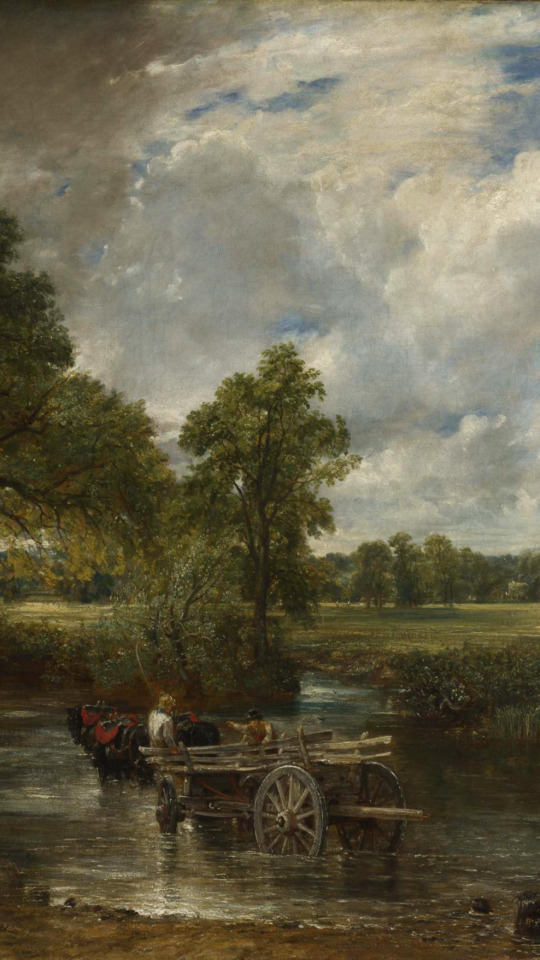

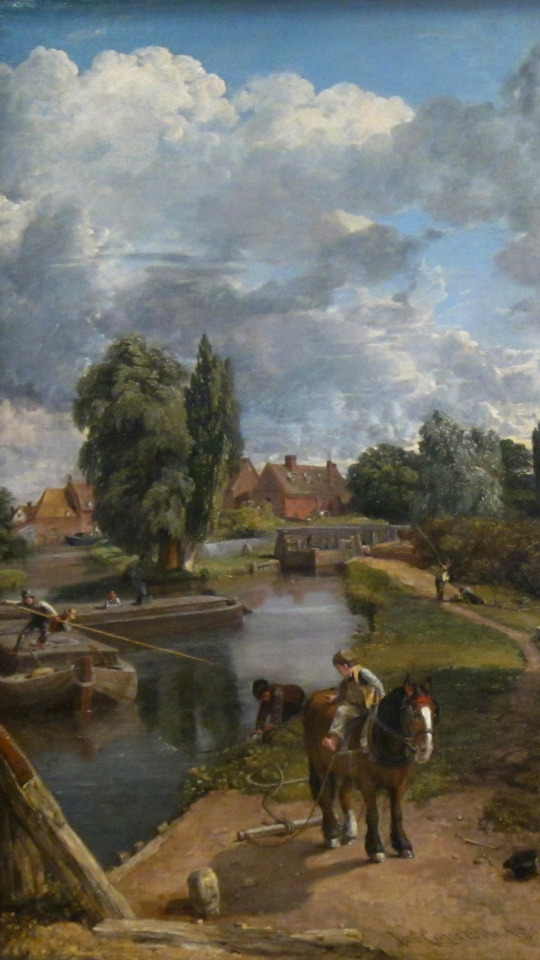
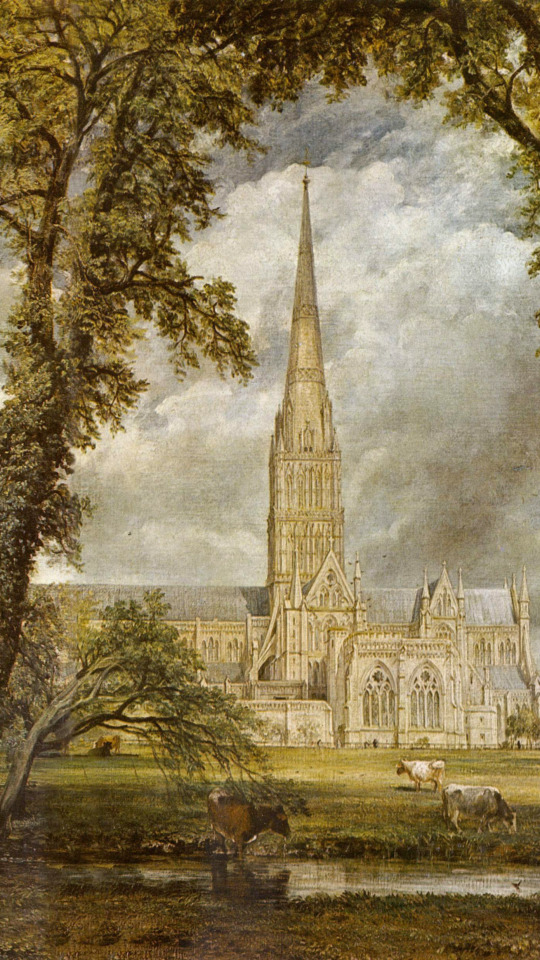
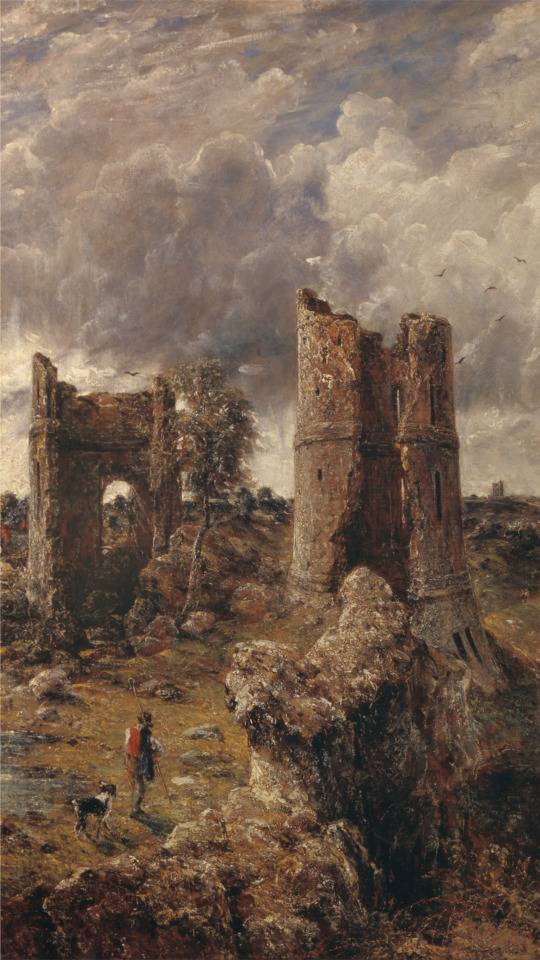

John Constable (1776 - 1837)
The Hay Wain
Salisbury Cathedral from the Meadows
Flatford Mill (Scene on a Navigable River)
Salisbury Cathedral from the Bishop's Grounds
Hadleigh Castle
#18th century#19th century#romanticism#realism#john constable#english#europe#art#art history#art wallpapers#wallpapers#lockscreen#art lockscreens#landscape#genre painting#pastoral#victorian england#salisbury#hadleigh#cathedral#castle#animals#cows#nature#rainbow#river#sky#architecture#horse#rural landscape
8K notes
·
View notes
